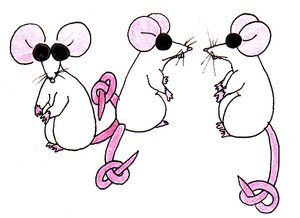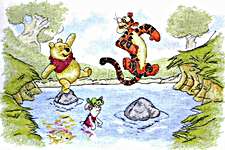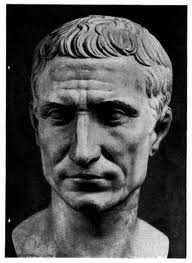From time to time I wonder what I would have done if I did not have the wonders of modern technology to help me go off on my various tangents. I’ll be sorting out Boggle’s sunflower seeds, for example, and before I know it, I’ll be investigating why French and Spanish have almost identical words for sunflower, reflecting the fact that the flowers turn to the sun, while English only mentions the sun, but no movement. I’ll then be off, looking for the legend of Kleite the Sunflower Maiden, as remembered from happy infant school days, sitting in the far left-hand corner of the classroom with my nose stuck in one of the Wide Range Venture Reader books. I remember being very taken with Kleite, and wondering why my parents didn’t think it such a good idea to saddle any of my future female offspring with her name.
Having a grasshopper brain can be a bit of a nuisance at times, but it is also a fantastic aid to procrastination and a marvellous catalyst for all sorts of fascinating excursions along the highways and byways of knowledge and discovery.

Three blind mice. (Thanks to these guys for the image)
I was pondering the number three, as you do, and decided to do a little reading around. Numerologists, it seems, have plenty to say about the significance of numbers in our lives, and whether or not they have any spiritual significance. I just find them interesting, and when the fancy takes me, I might look further into the number seven. I wonder if this strange curiosity is somehow genetic. My son, at the age of about five or six, complained that he had not been able to sleep the previous night because he had been too busy trying to think of different ways to make point two five. His fascination was a little more focussed than mine, and he went on to be very good at maths. I simply went on to find out what I could about the number three.
So here is what I found.
From the three little pigs to “There were three of us in this marriage, so it was a bit crowded”, the number three looms large in our language, sometimes positively, sometimes not.
Western culture is more biased toward the number three than some others. It has been suggested that this might come from the Christian trinity, Father, Son and Holy Spirit.
Academics have written at length, speculating about our fondness for threes, pointing out that a more obvious number to focus upon would be two. After all, most of our world can be divided into two sexes, the bodies of the most familiar creatures tend to have two matching but opposite sides, and the whole of the digital revolution is based around the binary system.
In science there have been debates over whether science works from a basis of three and categorises things accordingly, (inner-middle-outer ear, egg-larva-adult) or whether the trios exist, and science merely discovers them. Which came first – the chicken, the egg, or the roast dinner?

Hop, Skip and Jump. (Thanks to this cross stitch supplies site for the image)
Whatever the reason behind our penchant for threes, they seem to fall, predictably, into three main categories. The first is things that for whatever reason just seem to need to be in threes, like cheers. Somehow two cheers seem mean, but four is just too enthusiastic. Why do we always talk of the alphabet as an ABC and not an AB or an ABCD? Why do we get so irritated that sound technicians only seem able to count to two?
The second type of threes shows two extremes and the mid point. Small medium and large is an obvious example. Traffic lights are red, amber and green. We speak of upper, lower and middle class.The third, and largest group of threes are in our use of language. It simply seems more comfortable and natural if it is in groups of three. In fairy stories the third option is often the favourite – think of Goldilocks and the three bears. In other stories, the third attempt or choice is the one that holds the answers, as in the three little pigs.
Throughout history rhetoric has made use of the magic number three. Julius Caesar’s “veni, vidi, vici” and the US declaration of the basic human rights, “Life, liberty and the pursuit of happiness” would seem slightly limp if truncated to “I came, I conquered”, or daft if stretched to “Life, liberty, the pursuit of happiness, enough to eat and drink, a decent education, and a warm bed”. So deeply entrenched is our need for neat, threesome rhetoric, that when Winston Churchill said all he had to offer was “blood, toil, tears and sweat”, history remembered and quoted it as “Blood, sweat and tears”.
Many American schools of public speaking advocate three sections to any speech; introduction, body, and conclusion. The body of the speech should have three points, each illustrated by three references or examples. And it doesn’t stop there. To reinforce the structure of the speech, some even recommend a three-point walk, moving from one point of an imaginary triangle on the floor to the next as the speaker transitions from one point in the speech to the next. It is probably safe to assume that each side of the triangle should be three paces long.
When you start looking for threes, you find them everywhere. Jokes typically have an Englishman, an Irishman and a Scot. Nursery rhymes have “three bags full” or repeat lines three times. In court we swear to tell the truth, the whole truth, and nothing but the truth. We beg, steal or borrow the money to afford a ceremony where we promise to love, honour and obey a tall, dark, handsome man. (In some cases, we hope it will be third time lucky.)
We expect three meals a day, a meal out most often has three courses, and our usual cutlery requirement is a knife, a fork and a spoon.
It’s amazing how many there are out there, making our life feel neat and comfortable. While you are counting the threes all around you, you might like to consider one of my favourite quotes, which features another set of three: “Yesterday is history, tomorrow a mystery, today is a gift. That is why they call it the present.”


